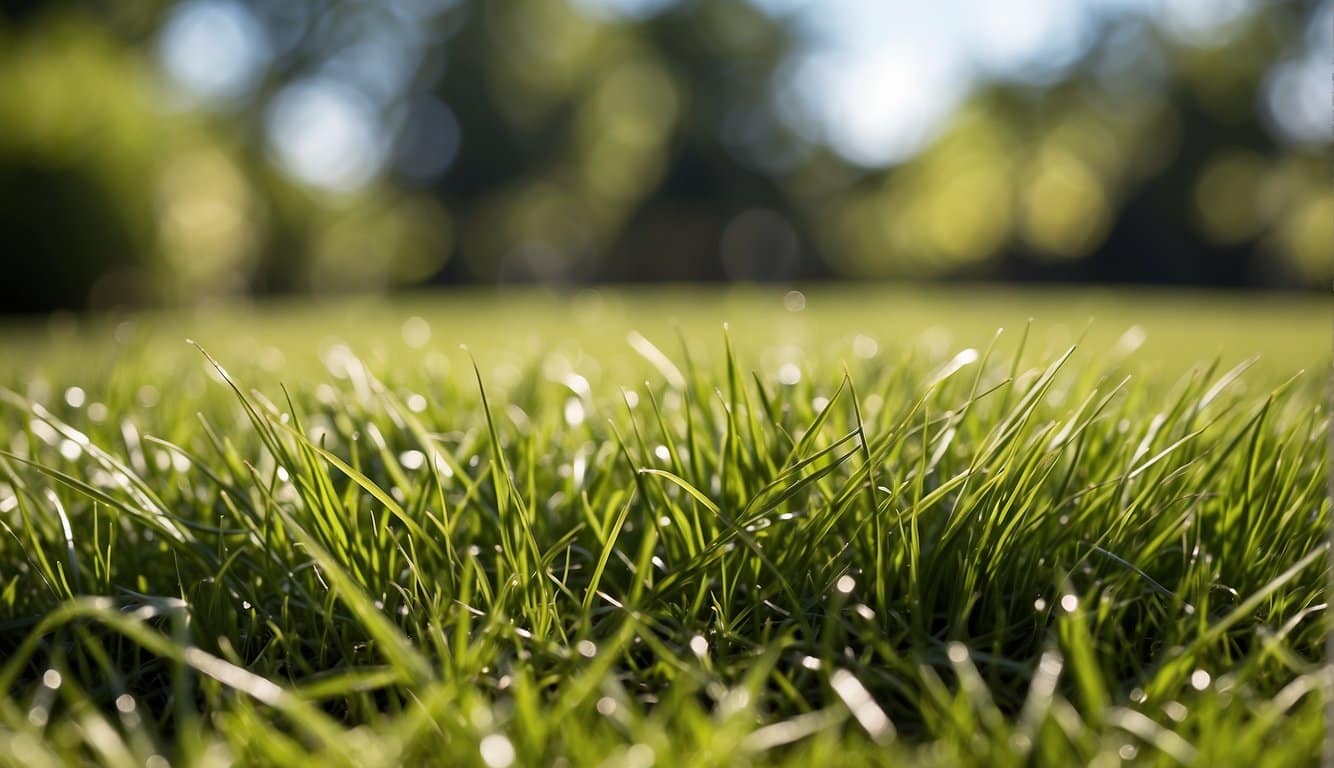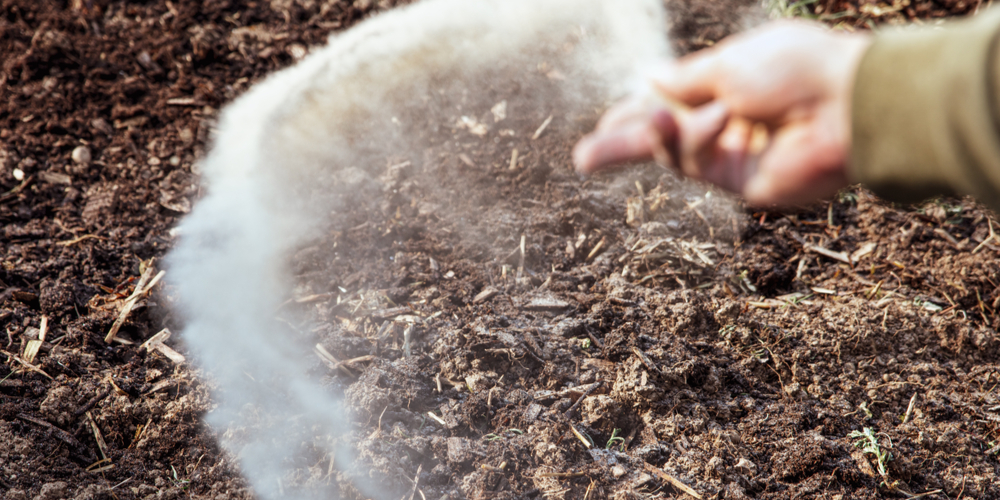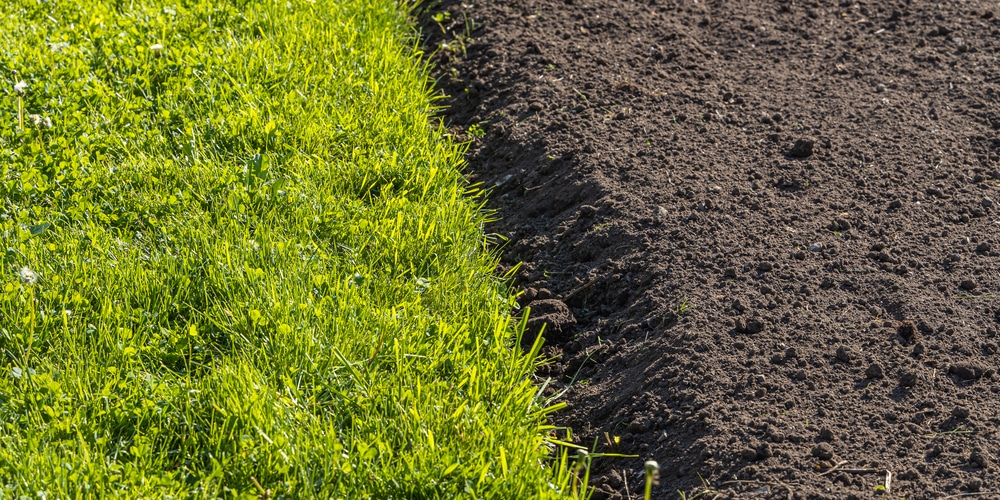Illinois Lawn Conditions: The Basics
Your Illinois lawn faces a unique set of conditions that will influence your choice of grass type.
Varying temperatures and seasons affect how well certain grasses will perform throughout the year.
Here’s what you need to consider:
Climate Factors:
- Illinois experiences a humid continental climate, with hot summers and cold winters.
- Southern Illinois is typically warmer, extending the growth period for warm-season grasses.
- Northern Illinois sees colder temperatures, making cool-season grasses a more suitable choice.
Soil Types:
- Soil composition in Illinois can vary, from clay-heavy soils to loamy and silty compositions.
- Before planting, conduct a soil test to understand your lawn’s specific needs for nutrients and pH balance.
Sunlight and Shade:
- Evaluate your lawn’s sunlight exposure; full sun, partial shade, or full shade.
- Certain grasses, like Fine Fescue, are adaptable to shaded areas.
Maintenance Requirements:
- Regular mowing practices are crucial, and for optimal health, avoid removing more than 1/3 of the blade height at a time.
- Irrigation needs differ among grass types; some, such as Fine Fescue, have lower water requirements.
Top 5 Grass Types for Illinois
When selecting a grass type for your lawn in Illinois, it’s essential to choose one that adapts well to the region’s varying climate. Here are five grass types that are proven to thrive in the Prairie State.
Kentucky Bluegrass
Kentucky Bluegrass is a popular choice for Illinois lawns due to its lush color and ability to recover from damage.
It grows best in full sun but can tolerate some shade. Mow this grass to maintain a height of 2.5 to 3.5 inches.
Fine Fescue
Fine Fescue includes several species that are often blended together. They’re ideal for areas with shade and low fertility.
Fine Fescue should be kept between 2.5 and 4 inches in height and is known for its fine, narrow blades.
Perennial Ryegrass
Perennial Ryegrass germinates quickly and provides a dense, fine-textured turf.
It’s particularly good for overseeding and can be maintained at a height of 1.5 to 2.5 inches.
This grass type is appreciated for its rapid establishment and resistance to heavy foot traffic.
Tall Fescue
Tall Fescue is recognized for its deep roots and tolerance to drought.
It’s a coarse-textured grass that prefers full sun but manages partial shade as well. Keep Tall Fescue mowed to a recommended height of 2 to 3 inches to help it maintain its resilience.
Buffalograss
Buffalograss stands out for its exceptional heat tolerance and has a unique blue-green hue.
It is a low-maintenance option that is optimal for Illinois’ warm summers. Buffalograss performs well when maintained at a height between 2 to 3 inches.
Planting and Maintenance Tips
To ensure a thriving lawn, establishing a proper planting and care routine is essential when it comes to the specific climate and soil of Illinois.
Planting Time:
The ideal planting time for grass seed in Illinois is during fall, between mid-August and mid-October.
This period takes advantage of cooler temperatures, which are conducive to seed germination and root establishment. Plant when the soil temperature is between 50-65 degrees Fahrenheit.
Soil Preparation:
Before sowing, test the soil’s pH level; it should ideally be between 5.5 and 6.5 for most grass types suited to Illinois.
Amend the soil as needed to reach the ideal pH and ensure it is well-aerated, loose, and free of debris.
Seed Selection:
Consider these grass options:
- Tall Fescue: Resistant to disease and versatile across various soil types.
- Kentucky Bluegrass: Known for its ability to recover from damage and grow through underground rhizomes.
- Perennial Ryegrass: Select for quick germination and establishment.
Watering Schedule:
Newly seeded lawns: Keep consistently moist but not waterlogged during the first weeks post-planting.
Established lawns: Aim for about 1 to 1.5 inches of water per week, whether from rainfall or irrigation.
Fertilization:
Apply a starter fertilizer at planting and adhere to a regular feeding schedule according to the grass type’s specific needs, typically when active growth is observed.
Mowing Tips:
Do not mow until your new grass reaches 3 inches in height, and never cut more than 1/3 of the blade length to avoid stressing the grass.
Seasonal Lawn Care Guide
Spring:
In the early spring, from April to early May, your lawn emerges from dormancy.
Now is an excellent time to fertilize and provide it with the nutrients necessary for the upcoming growing season. Start mowing as grass begins to grow, ensuring the blades of your mower are sharp to avoid tearing the grass.
- Tasks:
- Fertilize to promote healthy growth.
- Mow regularly, setting the blade at a high setting to avoid cutting grass too short.
Summer:
Hot and potentially dry summers in Illinois can stress lawns.
Water your grass deeply but infrequently, promoting strong root systems.
If you choose to use pesticides or herbicides, apply them cautiously, following label directions to avoid damage to the lawn or environment.
- Tasks:
- Water deeply once a week.
- Apply treatments for pests or weeds if necessary.
Fall:
Early September is ideal for another round of fertilizer to help the lawn recover from summer and prepare for winter.
Around early November, a final round of fertilizer fortifies the grass against winter stress. Overseeding can also be beneficial during this time, particularly for cool-season grasses that thrive in Illinois’ climate.
- Tasks:
- Apply fertilizer in early fall and again in late fall.
- Overseed to fill in sparse areas and improve lawn density.
Winter:
While lawn care is minimal during this time, it’s important to keep the lawn clear of debris and heavy objects that could smother the grass, leading to issues such as snow mold and compaction.
- Tasks:
- Remove sticks and other debris.
- Avoid walking on the lawn too frequently to prevent compaction.
Frequently Asked Questions
Selecting the right grass for your lawn in Illinois is essential to ensuring a lush, green garden. Understanding the varying climates and conditions across the state plays a crucial role in making the right choice for your lawn. Let’s explore some common queries to help you make an informed decision.
What types of grass seed are most successful in Illinois climates?
Cool-season grasses such as Kentucky bluegrass, fine fescue, and perennial ryegrass thrive in Illinois’s climate. You will find these grass types compatible with the fluctuating Midwestern temperatures.
Which grass variety is ideal for areas receiving full sun in Illinois?
For areas in Illinois receiving full sunlight, Kentucky bluegrass is an excellent choice. It has good drought tolerance and creates a dense, vibrant lawn under ample sunshine.
How does Bermuda grass perform in Illinois weather conditions?
Bermuda grass, a warm-season grass, can struggle in the colder northern regions of Illinois. It is better suited to the warmer, southern parts of the state where summers are hot, and winters are milder.
What is the most recommended grass seed for overseeding lawns in Illinois?
Overseeding in Illinois is often done with perennial ryegrass due to its quick germination and establishment, helping to maintain the lawn’s density and vigor through the seasons.
What species of grass is indigenous to the Illinois region?
Native grass species like prairie dropseed and little bluestem are indigenous to Illinois, adapted to its prairies and offering a more natural and sustainable landscaping option.
What are the optimal grass choices for the distinct climates of Southern and Northern Illinois?
In Northern Illinois, fine fescue and Kentucky bluegrass are ideal for their cold tolerance.
Southern Illinois lawns benefit from the heat tolerance of grasses like zoysia and tall fescue.
Last update on 2025-06-06 / Affiliate links / Images from Amazon Product Advertising API





